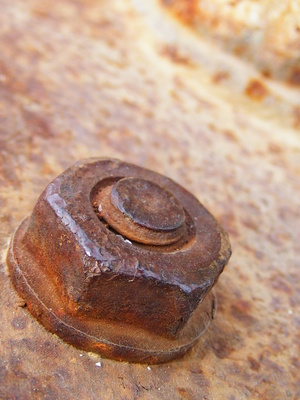
Broken stud bolts on automobiles or motorcycle engines can be a chore and raise panic in the most sane individual. Studs can be found on cylinder heads, throttle bodies, carburetor base plates and intake and exhaust manifold mounting surfaces. Usually designed for the life of the engine, stud bolts can become damaged by stripped threads, stretching or breaking. Fortunately, not all components must be thrown away if they have a broken stud or delivered to a machine shop for removal. The competent do-it-yourself repair person can perform a stud removal with a few simple techniques and tools.
Make sure to remove the component with the stud from the engine, if possible. Place the part securely in a wide-jaw vice. Use rags to cushion the contact surface of the part before you tighten it. Soak the base of the bolt with penetrating oil several times and allow to soak.
Take two nuts that fit the thread size of the stud. If only a small portion of the stud protrudes due to breakage, use thin nuts (half-size). Screw one nut down to the end of the thread length--don't tighten it. Screw the second nut down until it rests against the other nut. Take one end wrench of the proper size and slip it over the bottom nut. Take another end wrench and place it over the top nut. Simultaneously turn the bottom nut counterclockwise, while turning the top nut clockwise. Use this force to "lock" the two nuts against each other. Now turn the top nut counterclockwise to free the stud.
Use a pair of vice grips to secure and lock onto the stud if the threads have become damaged or broken off. As long as you have enough thickness on the stud for the vice grip jaws to tighten around, you can remove it in this fashion. Once the jaws have become locked, twist the vice grip handle counterclockwise. If the vice grip slips off, adjust the setting for a tighter lock grip.
Use a file to flatten the exposed stud head if it has broken off too close to the surface for the nut or vice grip technique to work. Use a center punch and hammer to drive a guide hole directly into the center of the stud head. Use a smaller diameter drill bit to drill the hole into the stud, keeping your drill hand steady. Do not veer off course and drill into the non-stud material. Use a tap and die set (bolt extractor tools), according to directions, to remove the stud. This also works if the stud has broken off below the surface of the metal.